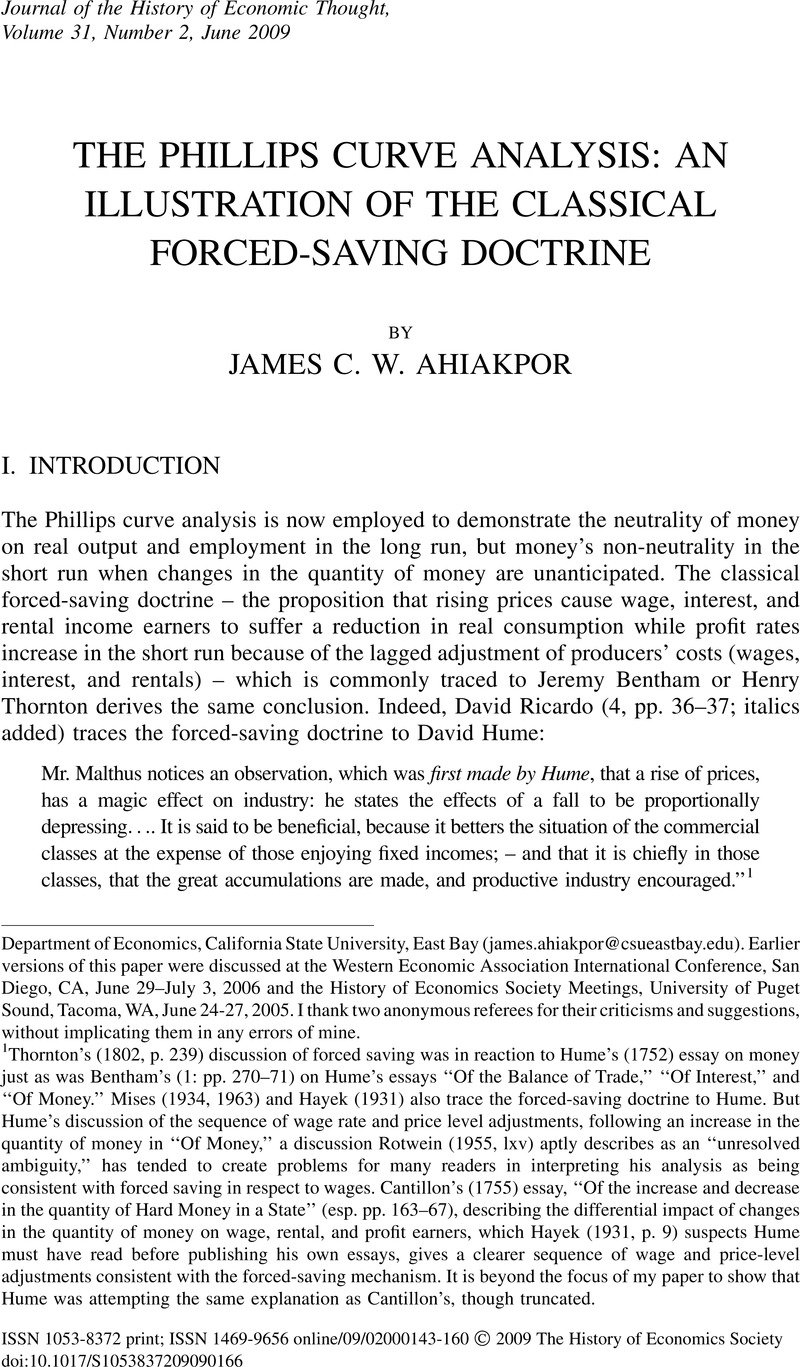Crossref Citations
This article has been cited by the following publications. This list is generated based on data provided by Crossref.
Laidler, David
and
Sandilands, Roger
2010.
Harvard, the Chicago Tradition, and the Quantity Theory: A Reply to James Ahiakpor.
History of Political Economy,
Vol. 42,
Issue. 3,
p.
573.
Ahiakpor, James C. W.
2010.
On the Similarities between the 1932 Harvard Memorandum and the Chicago Antidepression Recommendations.
History of Political Economy,
Vol. 42,
Issue. 3,
p.
547.
AHIAKPOR, JAMES C.W.
2013.
THE MODERN RICARDIAN EQUIVALENCE THEOREM: DRAWING THE WRONG CONCLUSIONS FROM DAVID RICARDO’S ANALYSIS.
Journal of the History of Economic Thought,
Vol. 35,
Issue. 1,
p.
77.
Salerno, Joseph T
and
Dorobat, Carmen Elena
2018.
Currency depreciation and the monetary adjustment process: reconsidering Lord King’s contributions.
Oxford Economic Papers,
Vol. 70,
Issue. 3,
p.
699.
Meyer, Danie Francois
Chipeta, Chama
and
Camel, Richard Thabang Mc
2018.
An Analysis of the Effectiveness of Interest Rates to Facilitate Price Stability and Economic Growth in South Africa.
Studia Universitatis Babes-Bolyai Oeconomica,
Vol. 63,
Issue. 3,
p.
68.



